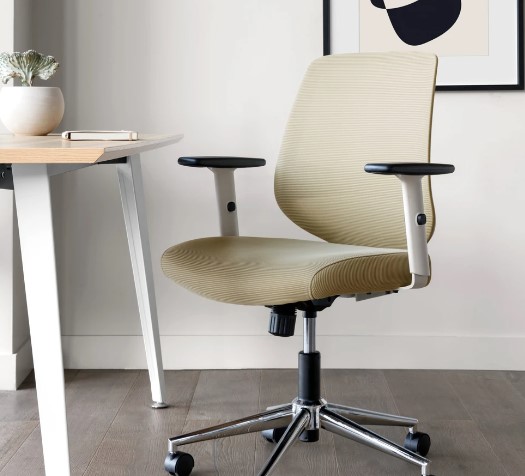When we think about office chairs, we often focus on their ergonomic features and comfort. However, the design and shape of office chairs can also have a significant impact on collaboration and communication in the workplace. In this article, we will explore how the aesthetics and layout of office chairs can influence interactions, teamwork, and the overall work environment.
The Influence of Office Chair Shape:
The office chair design is not solely about aesthetics but also about functionality. The shape of office chairs can affect how people interact and collaborate in a workspace. Let's examine some of the key ways in which chair shape can impact collaboration and communication.
1. Seating Arrangements:
The arrangement of chairs in a workspace can encourage or inhibit collaboration. Circular or semi-circular seating arrangements, where chairs face each other, promote open and inclusive discussions. This setup encourages eye contact, engagement, and free-flowing communication, making it ideal for team meetings and brainstorming sessions.
2. Modular Seating:
Modular or configurable office chairs allow for versatile seating arrangements. These chairs can be easily reconfigured to suit different needs, such as group discussions, one-on-one meetings, or independent work. Their flexibility supports dynamic collaboration and encourages adaptability in the workspace.
3. Collaborative Bench Seating:
Bench-style office chairs provide a collaborative and communal atmosphere. They encourage employees to work closely together, which can foster teamwork and shared creativity. These seating options suit open workspaces, co-working areas, and project-based work.
4. Lounge Chairs:
Lounge chairs, with their comfortable and inviting design, create a relaxed atmosphere that encourages informal conversations and impromptu meetings. They are ideal for break areas, shared spaces, and collaborative zones, where employees can gather for casual discussions.
5. Office Chair Material and Color:
The choice of chair material and color can also impact communication. Bright and colorful chairs can inject energy and vibrancy into a space, while neutral tones may create a more subdued and focused environment. The material of the chair, whether leather, fabric, or mesh, can contribute to the overall ambiance and comfort.
Benefits of Considerate Chair Design:
- Improved Communication: Thoughtful chair design can facilitate face-to-face communication and eye contact, promoting open and practical discussions.
- Enhanced Collaboration: Seating arrangements that support collaboration can lead to better teamwork, idea-sharing, and problem-solving.
- Comfort and Productivity: Comfortable chair designs can reduce discomfort during long meetings, helping participants stay engaged and focused.
- Positive Work Environment: A well-designed workspace with aesthetically pleasing chairs can create a positive and inviting atmosphere, encouraging employees to collaborate and communicate.
- Flexibility: Chairs that are easy to move and reconfigure provide flexibility in the workspace, adapting to different collaboration needs.
Considerations for Choosing Office Chairs:
When selecting office chairs with collaboration and communication in mind, consider the following factors:
- Space Planning: Assess the available space and its layout to determine the most suitable chair design for your office.
- Comfort: Prioritize chairs that offer ergonomic support and comfort, ensuring employees can sit for extended periods without discomfort.
- Aesthetics: Choose chairs that complement the overall design and aesthetics of your workspace while maintaining a balance between functionality and style.
- Adaptability: Opt for chairs that are adaptable and versatile, allowing for different seating configurations.
Conclusion:
The design and shape of office chairs play a more significant role in collaboration and communication than we may initially realize. Well-planned seating arrangements and chair choices can create a conducive environment for teamwork, idea exchange, and productive discussions. By considering the impact of office chair design, you can foster a collaborative and communicative workspace that enhances the overall quality of work and employee interactions.










